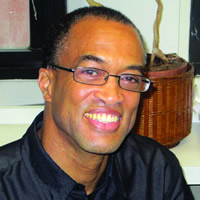Allegro
Reading, writing and rhythm
Creative teaching gigs are now available for musicians and other artists
Volume 113, No. 1January, 2013
Do you want to use your music to enrich the lives of public school
children – while getting paid? Here’s some news: the Actors Fund has come up
with a very creative way for musicians and other artists to do part-time
teaching gigs in the New York City public schools through the Actors Fund Work
Program.
It’s not without some fine print, but it just might turn out to
be a positive experience for you and a way to increase your income.
The program is called STARRRS, and it stands for “Substitute
Teachers for the Arts and the three R’s.” The idea is that musicians,
actors and other performing artists are sent into the New York City public
schools as substitute teachers.
But instead of following a standard curriculum, you are allowed to
use your music as a teaching tool. You may even give mini-concerts. It’s
ultimately up to the principal what you are allowed to do, but the idea is that
you use your artistry in the classroom.
The pay is $154.97 for a full day of teaching, minus taxes. That
means getting to a school around 8:30 and getting out around 3. On top of this,
there may be opportunities for additional work at an hourly rate. Subs are
members of the United Federation of Teachers and are covered by its union
contract.
Although the current budget situation has meant that some schools
are not using substitutes, a number have expressed an interest in those from
STARRRS – in fact many principals have expressed a specific interest in
musicians.
Here’s the fine print.
-
You have to attend a generic orientation session about the
Actors Fund Work Program, which lasts 2.5 hours. (If you’re already a
member of the Actors Fund Work Program, call your career counselor now and
ask about the STARRRS program.) -
Working with a career counselor, you will determine whether
STARRRS is appropriate for you. (Remember, the Actors Fund Work Program is
there to help you find a meaningful sideline or new career, so if STARRRS
isn’t right for you, the program will help you find another fit.) -
You must attend a separate STARRRS orientation and audition.
(Yes, there is an audition.) -
There is a substantial training commitment. Training takes
place three days a week, for four weeks. All participants must attend all
sessions. The training lasts all day, but you’ll get out of training in
time to do evening gigs. -
You’ll have to take a child abuse and violence prevention
workshop. -
You’ll have to take 20 hours of online training.
-
You’ll have to take the LAST (liberal arts and science test).
-
It will ultimately cost you about $350 in fees, but at the end
of it all, you will have your substitute teachers’ license for the New
York Public School system. (Part of the cost covers fingerprinting fees. If
you’ve already been fingerprinted in the past from teaching or sub work,
you don’t have to be fingerprinted again and can knock about $115 off the
required fees.) -
There are some recertification requirements if you want to do
it again each year. -
If you finally make it through the program, the expectation is
that you will commit to at least two teaching days a week. (Remember, each
teaching day is 8:30 to 3, approximately.)
WHAT’S IT REALLY LIKE?
Local 802 member Michel Gohler is a woodwind doubler and freelancer
who is currently performing with the Broadway tour of “Memphis.” He
read about the STARRRS program in Allegro when we first published an article
about this program and decided to give it a try because he was interested in
teaching in a classroom and this was a way to dip in part-time.
Gohler reports that the training he received was excellent. His
first day in school was up at P.S. 173 in the Bronx. He notes that the school is
situated in perhaps a tough neighborhood, but he felt safe. “School started
at 8, but I got there at 7 to be prepared,” he told Allegro. “They
were just unlocking the doors!”
Gohler did not realize he would be assigned a classroom made up of
second grade children with special needs. However, the regular teacher was there
along with two aides.
For the first three sessions that day, Gohler just observed.
Afterwards, the regular teacher left to attend a workshop, and Gohler stepped up
to the plate: “I started by unpacking my flute and relating the names of
the flute parts to the parts of the body…head, mouthpiece, body, and so on.
Then I started playing.”
The students were interested at first, and then when they became a
little rowdy, Gohler had them march around the room. In a second class, he took
out his sax and repeated the concept.
Gohler points out that one of the greatest perks of the STARRRS
program is simply getting your New York City substitute teacher’s license. It’s
very hard to get one on your own, Gohler says, and the Actors Fund really acts
as your agent and walks you through the process. You can use your sub license to
do any kind of sub work, not just through STARRRS.
“I would recommend the STARRRS program to other members, but
you must have an interest in teaching,” Gohler says. “It’s quite
challenging and usually with schools in the greatest need. These aren’t cushy
assignments. Most of my STARRRS colleagues concur that these assignments are
super challenging and also really rewarding. It’s really not an easy way to
make money on the side: you’re in it for real, but I’m glad that I did
it.”
Local 802 member Clare Cooper would agree. She worked for three
different placements in the STARRRS program.
“I was put in some very difficult situations and since I don’t
have a lot of experience dealing with kids, I had a hard time,” Cooper told
Allegro.
Cooper added, “I would recommend this program to other
musicians who have teaching experience or are parents and know how to deal with
children. I am grateful for the work during a time when gigs were scarce.”
Another member, violist and violinist Janet Lucy, came into the
program with a lot of teaching experience, but not much subbing experience. She,
like Michel Gohler, was a newcomer to STARRRS.
Lucy said, “I have enjoyed the moments where I have made a
connection with a child – and there have been a fair amount for someone new at
this. The children seem excited to have a teacher who does music with them, even
though they also have a regular music teacher. I also have enjoyed the positive
responses from some of the staff who make it clear that the school values
music!”
Lucy added, “I would recommend this experience to musicians
who are really interested in teaching school-aged children and who feel fairly
comfortable presenting what they do for classroom environments. One thing to
know is that in my classrooms, there have been floating assistants who can help
with discipline, which has been a crucial element. If the children’s focus isn’t
with you, they won’t listen to music well. On the other hand, I found my
violin to be a good starting point for listening. I think the public schools are
particularly hungry for the arts right now, especially the ones with principals
who place a real value on them.”
NEXT STEPS
Are you still interested? If so, the first step is to attend one of
the Actors Fund Work Program orientation sessions. These sessions are not
specifically about the STARRRS program, but you must start the whole process by
attending one of these. They take place every Monday from 12 noon to 2:30 p.m.
at 729 Seventh Avenue, between 48th and 49th Streets, on the 11th floor. (You
must arrive on time: no latecomers permitted.)
After you do that, the next STARRRS orientation and auditions are
planned for January.
If you need any more information, please contact the Actors Fund Work Program
at (212) 354-5480. Ask for extension 272 to get information on the general
orientation session, which is your first step. Even if you’re not interested
in the STARRRS program itself, but you want more information on career
development, call the Actors Fund Work Program. It is a valuable resource for
musicians and all performing artists.
‘I believe that teaching is a wonderful way to make a difference in the lives of New York City public school children’
Violist Pedro Libert was born in Aruba and raised in Curaçao. As a teenager, he traveled to the Netherlands to study music, where he earned degrees in conducting, music theory and viola. Libert started in the STARRRS program and is now a full-time teacher. Here, Libbert offers his thoughts on the STARRRS program.
I believe teaching is a wonderful way to make a difference in the lives of New York City public school children. Also, I am a dad, and I welcome work opportunities that will give me stability, but also allow me to continue to be a musician.
The brilliance of the STARRRS program lies in our training instructor Howard Katzoff, who is not only a seasoned educator, but also has a total commitment to children and nurturing artists. Howard believes very strongly that students’ skills and talents are the foundation of all classroom instruction. I experienced this approach as not only learning from the teacher but also learning with the teacher. Honestly, the STARRRS experience made me recognize the ingredients of quality education.
During my time at STARRRS, I taught a music/art lesson for seventh graders. This class included some children with special needs. For one of my lessons, I used the story “The Zax” by Dr. Seuss. I had four students form a band, playing some small percussion instruments I had brought in to accompany the story. I thought that by involving the students in some physical activity, I could stir their motivation. Adding a band proved to be good for a spirit of teamwork. Some students suggested modifying the end of the story and integrating a dance. Eventually several students wanted a turn to play the Zax role or to have a round in the band.
Later, I was assigned to a classroom where I was in charge when the main teacher took kids out of the room for assessments and testings. During these times, I used some the creative techniques, but I also managed the classroom and helped students like a traditional substitute teacher.
I ultimately took a break from the STARRRS program so I could finish my dual master’s degree from Lehman College in teaching and special education. After graduating, I found work first as a high school sub. Finally, I got a full time job at the same school teaching special education and creative arts.
The STARRRS program was invaluable to me: it enabled me to start my teaching career and earn my sub license. That’s one of the best things about the program: it helps you through the licensing process from start to finish.


